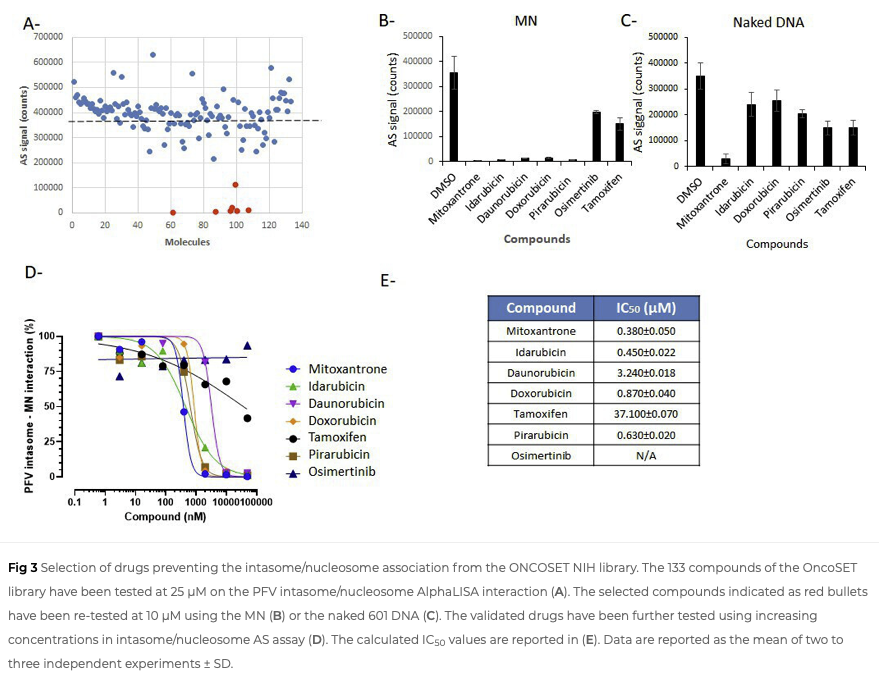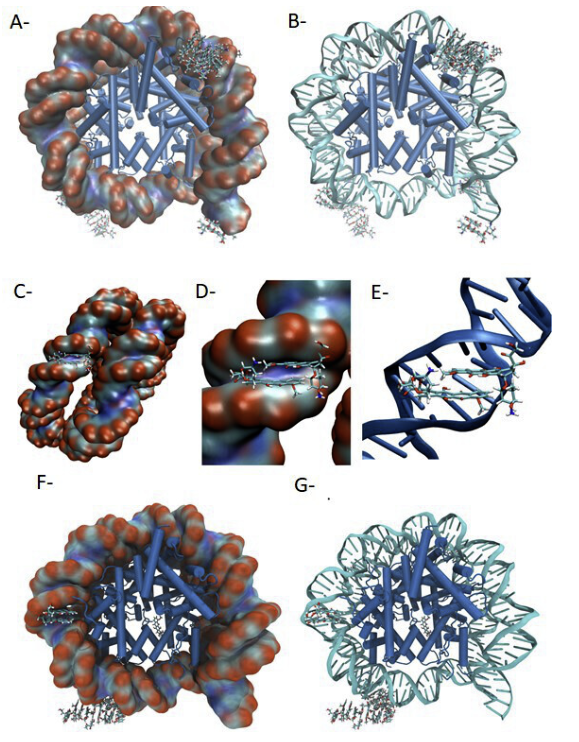Have a look at another recent collaborative research paper published in mBio (IF 7.786), in a collaboration with the research group of Prof Vincent Parissi (Univ Bordeaux, Paris).
In this paper entitled “Modulation of the functional interfaces between retroviral intasomes and the human nucleosome” we report the first monitoring of retroviral intasome/nucleosome interaction by AlphaLISA. This is the first description of the AlphaLISA application for large nucleoprotein complexes (>200 kDa) proving that this technology is suitable for molecular characterization and bimolecular inhibitor screening assays using such large complexes.
Using this system, we have identified new drugs disrupting or preventing the intasome/nucleosome complex and inhibiting HIV-1 integration both in vitro and in infected cells. This first monitoring of the retroviral/intasome complex should allow the development of multiple applications including the analyses of the influence of cellular partners, the study of additional retroviral intasomes, and the determination of specific interfaces. Our work also provides the technical bases for the screening of larger libraries of drugs targeting specifically these functional nucleoprotein complexes, or additional nucleosome-partner complexes, as well as for their characterization.
Modulation of the functional interfaces between retroviral intasomes and the human nucleosome
E. Mauro, D. Lapaillerie, C. Tumiotto, C. Charlier, F. Martins, S. F. Sousa, M. Métifiot, P Weigel, K. Yamatsugu, M. Kanai, H. Munier-Lehmann, C. Richetta, M. Maisch, J. Dutrieux, J. Batisse, M. Ruff, O. Delelis, P. Lesbats and V. Parissi
mBio (2023) | DOI: 10.1128/mbio.01083-23
ABSTRACT
Infection by retroviruses as HIV-1 requires the stable integration of their genome into the host cells. This process needs the formation of integrase (IN)-viral DNA complexes, called intasomes, and their interaction with the target DNA wrapped around nucleosomes within cell chromatin. To provide new tools to analyze this association and select drugs, we applied the AlphaLISA technology to the complex formed between the prototype foamy virus (PFV) intasome and nucleosome reconstituted on 601 Widom sequence. This system allowed us to monitor the association between both partners and select small molecules that could modulate the intasome/nucleosome association. Using this approach, drugs acting either on the DNA topology within the nucleosome or on the IN/histone tail interactions have been selected. Within these compounds, doxorubicin and histone binders calixarenes were characterized using biochemical, in silico molecular simulations and cellular approaches. These drugs were shown to inhibit both PFV and HIV-1 integration in vitro. Treatment of HIV-1-infected PBMCs with the selected molecules induces a decrease in viral infectivity and blocks the integration process. Thus, in addition to providing new information about intasome-nucleosome interaction determinants, our work also paves the way for further unedited antiviral strategies that target the final step of intasome/chromatin anchoring.


